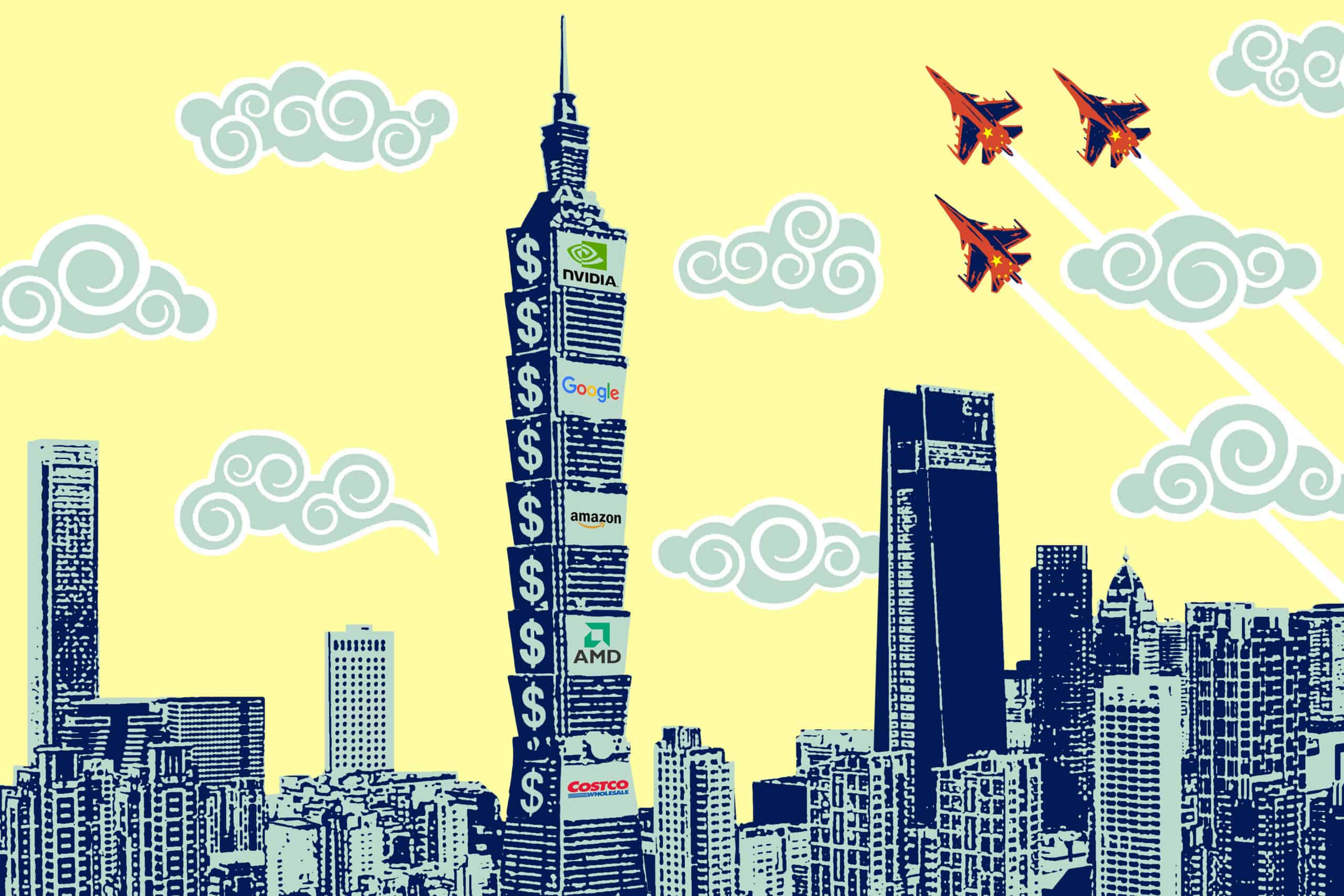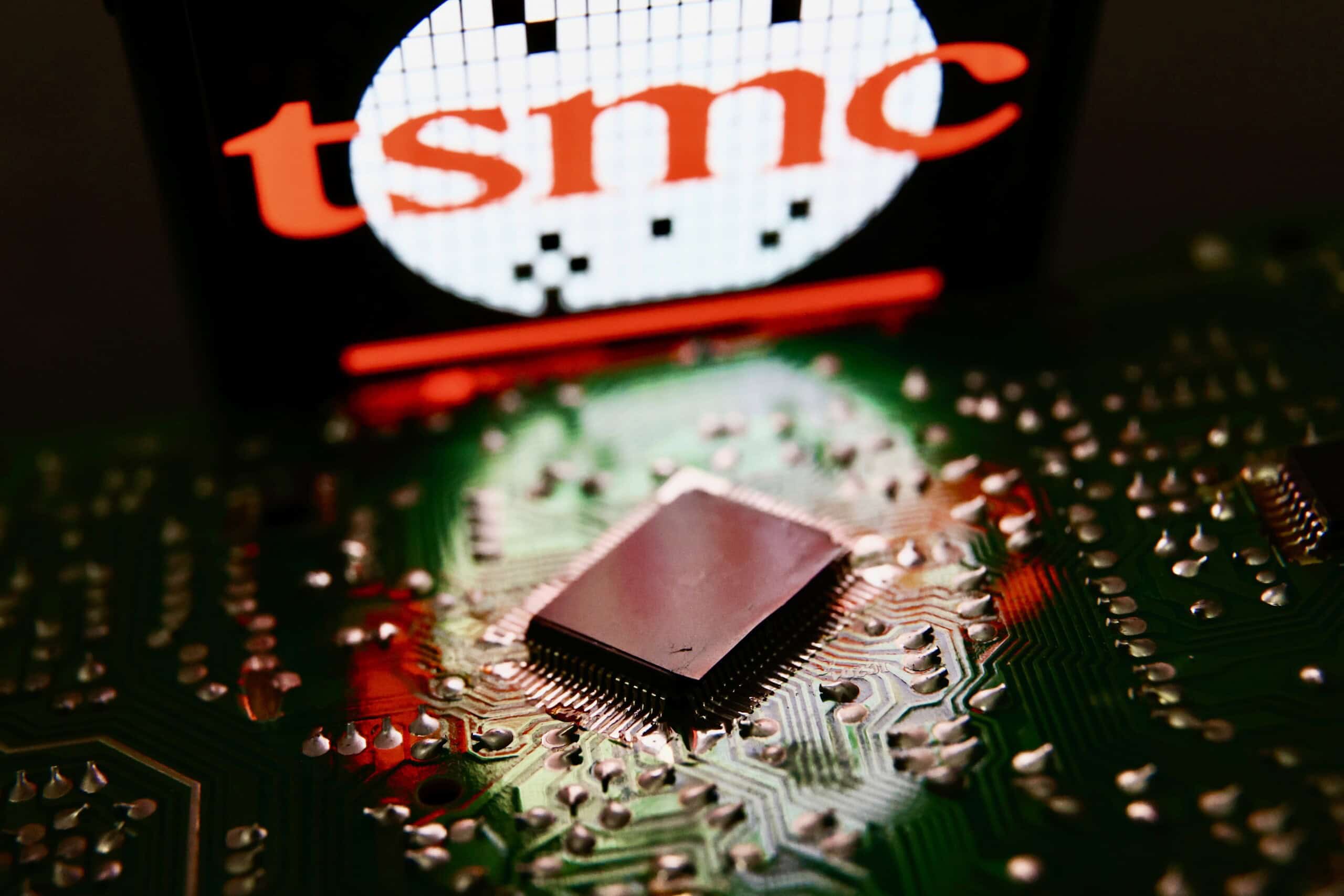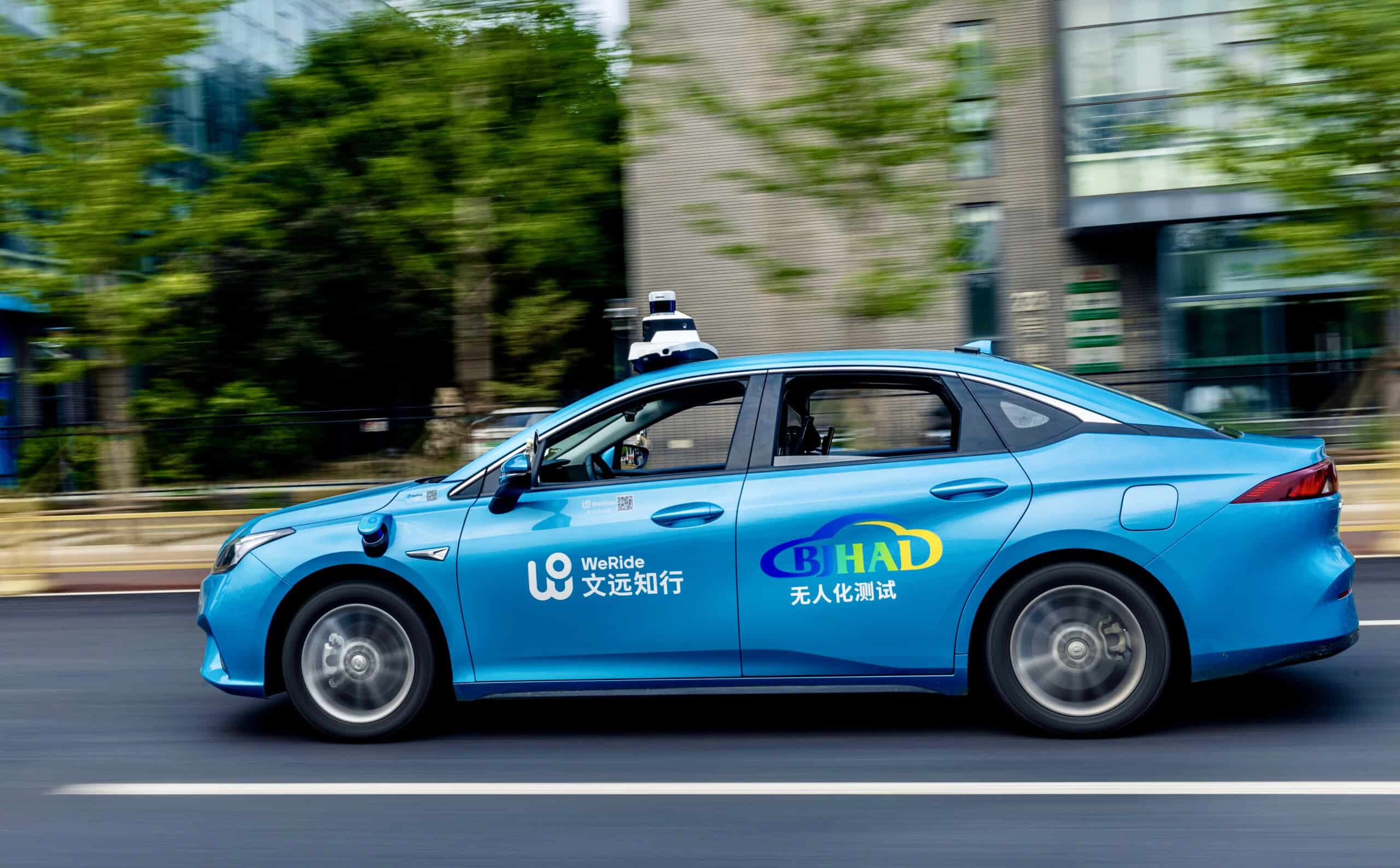


If western investors just read the news at home, they might think that Taiwan is extremely dangerous… But it is not like that at all … There are no tanks on the streets here.
Kwangyin Liu, an editor at CommonWealth magazine and host of the podcast Taiwanology

Indeed, while many high-tech investors have rushed in thanks to the euphoria of Taiwan’s AI boom, many other companies seem to be at a standstill, unsure of how to assess a confluence of challenges. AmCham Taiwan’s 2024 survey found that while 41 percent of U.S. companies intended on expanding investments in the coming year, 51 percent were neither raising nor lowering their investments — with geopolitical uncertainty as the main reason why. In the first eight months of 2024, meanwhile, foreign investment dropped nearly 30 percent compared to the same period in 2023.
If military drills and diplomatic tensions continue to squeeze the island, making a worst-case scenario seem more likely, the slow drip of investment out of Taiwan may expand into a flood.
“After Covid-19, the Russian invasion of Ukraine, the war in Israel, escalating conflict in Lebanon and Iran, and the Houthi attacks in the Red Sea, firms keep getting disrupted in a material way,” says Buckner. “The unimaginable is now feasible.”

The question then becomes whether or not Taiwan can maintain its allure going forward. Although the chances of all-out war tend to be overblown, many multinationals are aware of the need to offset dependencies on Taiwan for other reasons, including a stalled decarbonization drive and the pushes and pulls of the U.S-China geoeconomic rivalry.
“A lot of people in Taiwan do not realize that when western investors talk about ‘China +1’ strategies, they mean ‘Greater China +1,’” Liu says. “There is a sentiment among foreign companies that if they want to diversify away from China, then they will move away from Taiwan too.”
If Taiwan wants to maintain its reputation as a tech mecca, then, it may have to do more than just avoid the devastation of a Chinese attack.
FROM SILICON SHIELD TO AI ARMOR?
This May, in the wake of China’s “punishment” military exercises after President Lai’s inauguration, the jet streams of Chinese J-20 stealth fighters had hardly dissipated before Jensen Huang, Nvidia’s chief executive, arrived in Taipei.
Nvidia, which designs the high-end graphic processing chips at the center of the AI revolution, reportedly relies entirely on the Taiwan Semiconductor Manufacturing Company (TSMC) for its manufacturing needs and paid the Taiwanese giant some $8 billion last year.
Despite TSMC’s plans to diversify production slightly away from its Taiwan-based fabs, Huang said he felt “perfectly safe” relying on the country’s supply chains. “We’ve been doing technology and engineering and conducting business in Taiwan for almost three decades, and we’re going to continue to do that,” Huang told CNN, proclaiming that Taiwan was “at the center” of the global AI boom.

To meet the spiking demand from Nvidia and other tech firms, TSMC is now doubling its capacity in AI chips. To be closer to the action, Nvidia is building a new $715 million R&D center and supercomputer for AI research in Taiwan (with the help of a large grant from the Taiwanese government).
And it’s not the only one.
The American chip maker AMD plans to invest $270 million in two R&D facilities of its own (also with Taipei’s financial backing), while Google recently announced plans to open a second R&D hub for hardware in Taiwan, saying it is “really serious about building an ecosystem.” And beginning next year, Amazon will commence a 15-year commitment of billions of dollars in new data center investments in Taiwan.
The sharp growth of AI chips and servers has led to an over tripling of Taiwan’s export sales to the U.S. since 2018. The close to $25 billion in exports to the American market in the first quarter of this year even surpassed what was sold to China — long Taiwan’s largest trading partner. J.W. Kuo, Taiwan’s Minister of Economics, has said that AI-chips and servers can sustain growth in Taiwan’s economy for another half century by attracting foreign investment and warding off China’s aggression.

Taiwan’s ‘silicon shield,’ it seems, may yet evolve into ‘AI armor.’
“The sheer draw of Taiwan’s semiconductor ecosystem, combined with its AI and quantum computing infrastructure, make the application of capital here inevitable,” says Rupert Hammond-Chambers, president of the U.S.-Taiwan Business Council.

Companies in high-tech industries like semiconductors could be excused for wanting to keep close links to Taiwan in face of the geopolitical risk. Chip production will rise in the U.S., Japan, and China in the years ahead, but Taiwan nonetheless remains home to about half of the world’s chip making capacity, including close to 80 percent in the most advanced ones (7 nanometer and under).
Yet Taiwan’s energy challenges betray its longer-term struggles to maintain a hold on America’s tech leaders.
Over 80 percent of Taiwan’s electricity consumption is still generated by fossil fuels — and a large chunk of it goes to the vaunted semiconductor industry. TSMC is the fourth largest carbon emitter in Taiwan, trailing only power, chemical and steel companies. And due to rising demand, TSMC’s electricity-use is set to rise from 6 percent of Taiwan’s total to over 12 percent by 2025.
TSMC’s largest customers, meanwhile, are demanding their supply chains go green. Apple, which accounted for a quarter of TSMC’s sales last year, intends for its products and supply chain to be carbon neutral by 2030. Although the current AI craze may cause America’s tech leaders to look the other way, buying Taiwan some more time, it’s unclear for how long.
As Mark Liu, who was TSMC’s chairman, said in 2021, without renewable energy options, TSMC could end up “marginalized” by global business.
Taiwan’s Ministry of Economic Affairs has been trying to address the renewable energy issue since at least 2016, when it launched a green energy initiative with the goal of renewables supplying one-fourth of Taiwan’s electricity demand by 2025. But strict localization demands slowed the rollout of green energy by scaring off many foreign investors; the European Union even opened a World Trade Organization dispute with Taiwan due to its local content criteria.
“Localization is a huge problem,” argues Hammond-Chambers from the U.S.-Taiwan Business Council. “Taiwan overplayed its hand and the market has now become less attractive as a consequence.”
While others pulled out over time, Copenhagen Infrastructure Partners (CIP) has been willing to face down the delays and higher costs that have plagued the industry, largely from local content demands, in order to gain a foothold in Taiwan. The Danish investment firm has three wind farm projects off Taiwan’s western coast; the largest, the 600W Changfang-Xidao project, was recently finalized after six years (with some Covid-induced delays) and cost $3 billion in total

After only reaching around half the original goal capacity, the Taiwanese government recently scaled back its green target. The Ministry of Economic Affairs also recently announced plans to “loosen industrial policy” on local content demands, in large part, Taiwanology’s Liu says, to attract more foreign investment and to advance its decarbonization to appease foreign tech investors. “Deployment of offshore wind will pick up tremendously if the government loosens the current controls,” she says.
Yet, even if it does get off the ground, Taiwan’s green transition still might not be enough. Currently, Taiwan’s extreme-dependence on the outside world for its energy needs are vulnerable to blockades and quarantines. Renewables, experts note, are vulnerable to hacking and physical disruptions. An escalation with China could push even the most devoted investors to exit the island.
PREPARING FOR THE WORST
Taiwan, says Hammond-Chambers from the U.S.-Taiwan Business Council, has a sense of resignation towards the China threat.
“People in Taiwan are used to having missiles pointed at them and planes and ships circling the island,” he adds. “It brings on a certain numbness and pushes away the notion that there is some imminence.”
Yet, in the past, even the most savvy operators in Taiwan have been surprised by cross-strait tensions boiling over.

Marinus van Gessel, a former chairman of the American Chamber of Commerce, said he was “sweating bullets” when Chinese ballistic missiles landed only 20 miles from major Taiwanese ports in March 1996. The “Third Taiwan Strait Crisis,” as it came to be called, was initiated nine months earlier because Taiwan’s then president, Lee Teng-hui, had visited New York for an alumni reunion at Cornell University.
In response to the diplomatic slight, China conducted live-fire military exercises on Taiwan during the second half of 1995 and in the lead up to its presidential elections in 1996. The toll on Taiwan’s economy from the second incursion was swift: exports fell by 10 percent, the stock market was down a quarter on the year, hotel rooms stood empty, and countless business meetings were canceled.
Van Gessel remarked that his nerves calmed only after the U.S. Seventh Fleet, a 14-ship armada that boasted two aircraft carriers, arrived to monitor the Chinese military drills that March.

But while the American naval presence on Taiwan’s east coast may have seemed reassuring to an American businessman, U.S. military analysts quickly surmised that the U.S. warships wouldn’t have the upper hand for long: China’s steadily growing and sophisticated missile arsenal would soon put them in grave peril.
Almost three decades later, China’s military capabilities have grown to “near peer” status in the Western Pacific. The question of how the U.S. would fare in any kind of Taiwan crisis is up for debate in war games from Washington to Honolulu, but a consensus remains that a crisis is on the horizon
In a survey conducted by the Center for Strategic and International Studies (CSIS), a slight majority of American and Taiwanese experts answered that a serious Chinese intervention, short of invasion, is a likely or very likely scenario within the next ten years.
Scenarios abound for how it would start. A Chinese attack on Taiwan could be triggered by Taiwanese calls for independence, American overreach, an accidental collision at sea or air, or just Beijing’s stubborn determination for reunification.

Then there is the question of how it might play out, and there are likewise scenarios aplenty: a full-scale amphibious invasion that leaves Taiwan in ruins and sparks guerilla warfare; a hybrid assault on Taiwan’s critical infrastructure that handicaps its food, water and energy supplies; or a maritime blockade or quarantine that slowly squeezes Taiwan’s capabilities to sustain its population.
A quarantine involving Chinese maritime law enforcement, for example, could target selective major ports, but nonetheless cripple Taiwan’s supply of critical energy resources. Close to 60 percent of its trade flows through the southern Port of Kaohsiung alone. One U.S. military study finds that 99.75 percent of Taiwan’s oil imports arrive at three ports: Kaohsiung, Keelung and Mailiao. Taiwan’s Ministry of Economic Affairs reports that the island maintains a stock of natural gas covering 10 to 11 days and coal for 39 days.
Since even short-term voltage drops in Taiwan can threaten global chip supplies, any Chinese intervention disrupting Taiwan’s power grid would cripple its chip production.
Given the stakes, experts recommend companies game out the impact of a Taiwan crisis just as the military plays out its war games.
“Scenario planning is very useful because what happens suddenly is that you become aware of who you are as an organization on the ground,” says Eskelund. “The main effect is that you end up shining a light on something that does not look quite right and that usually prompts a process to try to fix it.”
Some companies have already begun taking preparatory steps to correct such uncomfortable discoveries.
One 2022 Nikkei survey of American, Japanese and European companies in Taiwan, for instance, found that some are maintaining rolling seat reservations on commercial flights to evacuate expatriate staff and their families in the case of an emergency. They also reported distributing satellite phones to maintain contact with headquarters if Taiwan’s communication network becomes impaired.
Foreign companies in Taiwan have also reportedly begun transferring proprietary data out of servers on the island to prevent technological documents and other sensitive records from being leaked during a crisis. In the event of a Chinese attack, Dutch tech firm ASML, the global leader in manufacturing lithography equipment, has said it could remotely disable its advanced chip-making machines at TSMC fabs. According to TSMC’s former chairman Liu, TSMC would become “not operable” in any scenario that cut it off from its suppliers in the outside world.
It may not take place any time soon, but a Taiwan war is the nuclear bomb of geopolitical risk.
Dan Harris, an attorney at Harris Sliwoski
Then there is the value loss and even physical destruction that could befall corporate assets in the event of a Chinese military intervention. Indeed, CIP’s multi-billion dollar offshore wind power projects place over a hundred wind turbines in a sensitive maritime area; across the strait, in Fujian province, researchers argue that Beijing deliberately limits wind power investment to keep the waters free for military movements.
According to reporting from Reuters, major global insurers recently raised rates and tightened coverage for risks involving Taiwan.
Large companies are also recognizing novel threats from a potential Chinese attack on Taiwan.
Beyond considerations for protecting personnel, technology and assets, shareholder interests are at stake. The tech giants with the largest links to Taiwan, such as Nvidia, Amazon and Google, also happen to be public companies with around $7 trillion in market capitalization between them.
As Apple learned this March, when it settled a half a billion dollar class-action lawsuit for misleading investors about a sharp drop in iPhone sales in the Chinese market, shareholders may not simply accept large drops in stock value from supply chain disruptions due to tensions between China and Taiwan.
“Corporate boards are realizing that if there is a change in status quo between China and Taiwan, they could face shareholder lawsuits for not properly addressing those geopolitical risks by lowering dependencies,” says Stone Fish. “Companies need to provide shareholders with accurate information about these material risks.”

Beijing will also not sit idly by. Foreign executives have long feared making a slip of the tongue on Taiwan’s de facto independence, but their room to maneuver would narrow considerably in the event of a crisis. Companies that operate in both Taiwan and China could end up facing official or informal sanctions or consumer boycotts in China.
Nvidia, for instance, is on track to generate $12 billion in revenue from China this year — representing 10 percent of its total, according to the Financial Times. But even Nvidia CEO Huang slipped up during his recent visit to Taipei when he called Taiwan a country. To reduce any risk of a consumer backlash in China, Huang quickly clarified he was not making a “geopolitical comment.”
Threading that needle might not be so simple if a major crisis is brewing in the strait. Emily Kilcrease, a senior fellow and director of the Energy, Economics and Security Program at the Center for a New American Security, notes that ‘gray zone scenarios’ — where China imposes a quarantine or seizes Taiwan’s outlying islands — would be particularly challenging for multinational companies to respond to.
“They will probably have legal and operational flexibility to continue their operations in and with China,” she says, “but they will have to decide whether, when and how to ramp down.”
Indeed, any serious confrontation over Taiwan will have a long and deep reach into the global economy. One report suggests an additional $3 trillion in costs if the U.S. and its G7 allies sanction China’s banking system and significant trade and financial flows in a maximalist approach.
Such dire consequences may keep China in check. As Francesa Ghiretti, research leader at RAND Europe, explains, for Beijing “the underlying principle has always been identifying weak points in the target country [Taiwan] but making sure any action does not hurt the Chinese economy.”

As economic cooperation weakens, however, China has more wiggle room. Last year, just as the U.S. emerged as Taiwan’s largest export market, trade with China fell sharply by 19 percent to $166 billion. Taiwan is still one of the largest foreign investors in China, but levels plunged 40 percent last year to a paltry $3 billion — a 22 year low — while overall Taiwanese foreign investment rose dramatically.
With economic ties loosened and no official channels of communication between Taiwan and Beijing, Tse-Kang Leng, a professor of political science at National Chengchi University, notes that “cross-strait relations are in a very dangerous situation.”
The next ten years will ultimately tell whether it is a smart move for American and foreign executives to further limit their exposure to Taiwan — and, for that matter, China. In the corporate world, that is a decently long runway, yet Dan Harris, an attorney at Harris Sliwoski who helps foreign businesses operate in China, says he is still seeing two main reactions from American companies.
“Some companies stick their heads in the sand and make rationalizations to talk away the problem. Others decide to just get the hell out because they cannot afford the consequences of China invading Taiwan,” he says. “And, for the most part, they are right. They cannot afford it. It may not take place any time soon, but a Taiwan war is the nuclear bomb of geopolitical risk.”

Luke Patey is a senior researcher at the Danish Institute for International Studies and Lead Senior Research Fellow at Oxford University’s Institute for Energy Studies. He is author of How China Loses: The Pushback Against China’s Global Ambitions. His work has been published in The New York Times, Financial Times, The Guardian, The Hindu, Foreign Affairs and Foreign Policy. @LukePatey





